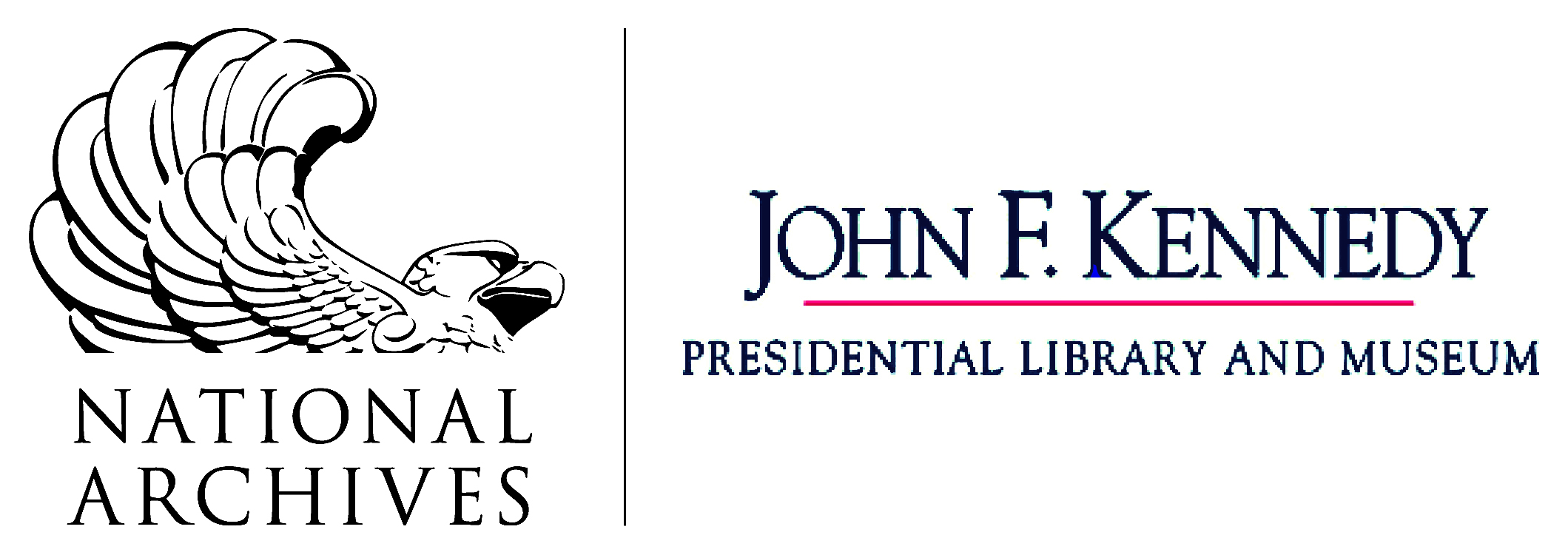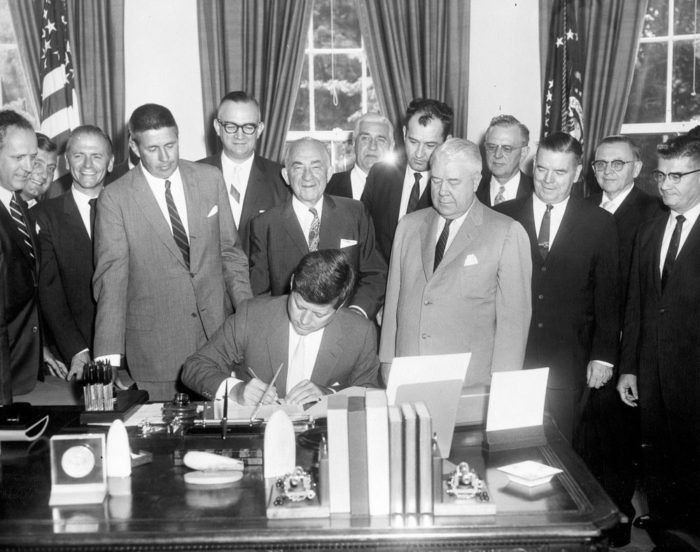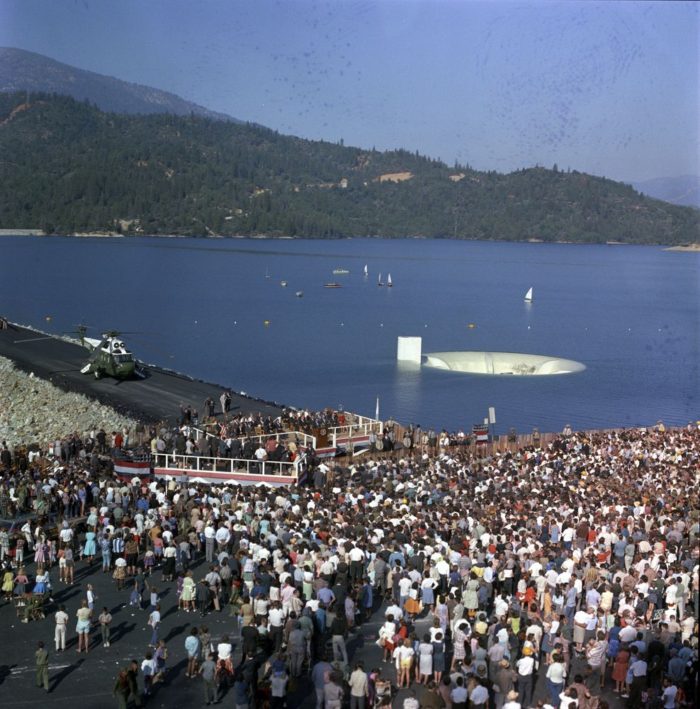(This post was published on our previous blog on 8/25/2016.)
By Maryrose Grossman, Audiovisual Reference Archivist
The centennial of the National Park Service on August 25, 2016 marked an occasion to consider John F. Kennedy’s relationship with the National Park Service and its goals of preserving natural and cultural resources and making them available to present and future generations. The Organic Act of 1916, establishing the National Park Service, stated:
The service thus established shall promote and regulate the use of the Federal areas known as national parks, monuments, and reservations hereinafter specified by such means and measures as conform to the fundamental purpose of the said parks, monuments, and reservations, which purpose is to conserve the scenery and the natural and historic objects and the wild life therein and to provide for the enjoyment of the same in such manner and by such means as will leave them unimpaired for the enjoyment of future generations. (U.S.C., title 16, sec. 1)
John F. Kennedy had voiced his support for these ideals before he was President. He was in particular an advocate for water conservation and expressed his position on the matter during the 1960 presidential campaign. He spoke of…
…the development of our vital water resources – water to reclaim the land, to supply the power for cities and industry, to provide the opportunity for recreation and pleasure, and to meet the needs of a rapidly expanding population…
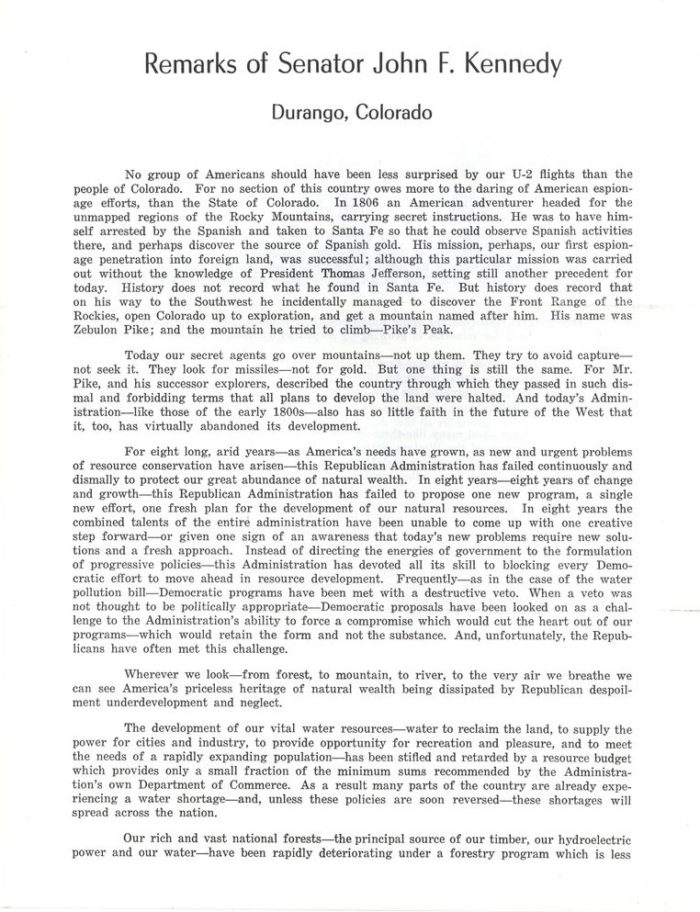
In 1956, the National Park Service issued a report entitled “Our Vanishing Shoreline” that decried the rapid loss of undeveloped and unspoiled seashore and urged the U.S. Government to acquire shoreline land so as to preserve it from private and commercial development and make it available for all. The Eisenhower Administration opposed public land acquisition, but John F. Kennedy answered the clarion call.
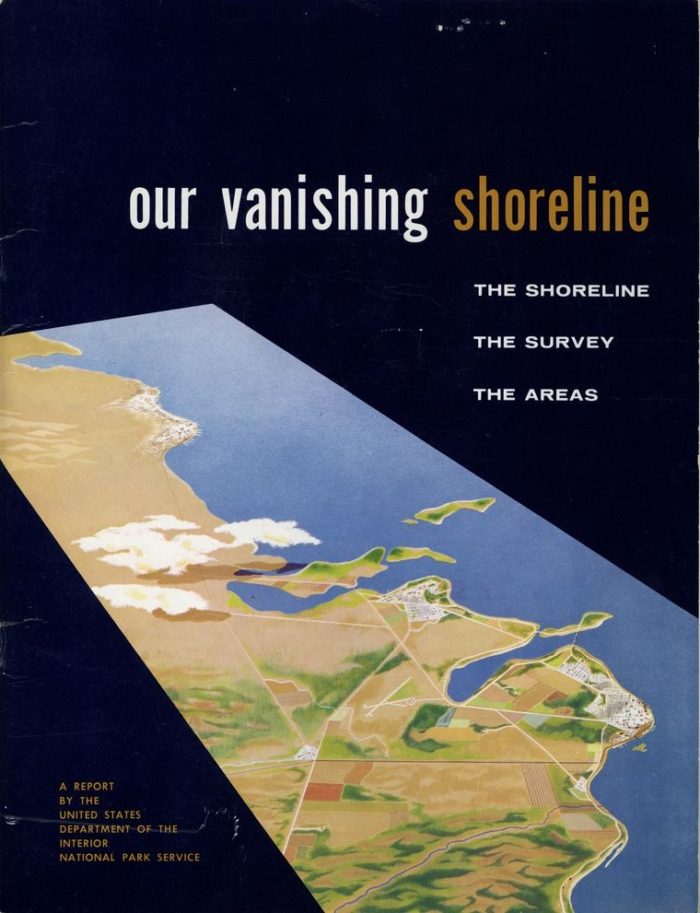
President Kennedy’s urgent advocacy of acquiring seashore as public land aided in the establishment of the Cape Cod National Seashore, Padre Island National Seashore, and Point Reyes National Seashore. At the signing of the legislation that established Point Reyes National Seashore in California on September 13, 1962, President Kennedy remarked:
The enactment of this legislation indicates an increased awareness of prompt action – and I emphasize that particularly with the population increase and these areas disappearing under that pressure – and the necessity for prompt actions to preserve our nation’s great natural beauty areas to insure their existence and enjoyment by the public in the decades and centuries to come.
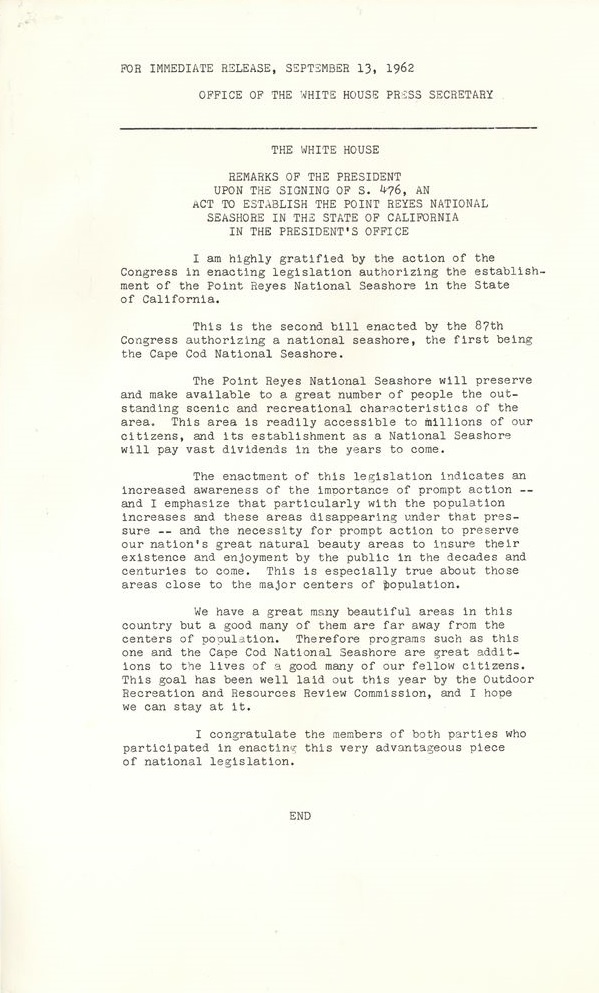
In the White House Message on Conservation, released March 1, 1962, President had reiterated his support for the development of additional National Park Service areas:
Last year’s Congressional approval of the Cape Cod National Seashore Area should be regarded as the path-breaker for many park land proposals pending before Congress. I urge favorable actions on legislation to create Point Reyes National Seashore in California; Great Basin National Park in Nevada; Ozark Rivers National Monument in Missouri; Sagamore Hill National Historic Site in New York; Canyonlands National Park in Utah; Sleeping Bear Dunes Lakeshore in Michigan; Prairie National Park in Kansas; Padre Island National Seashore in Texas; and a National Lakeshore area in Northern Indiana.
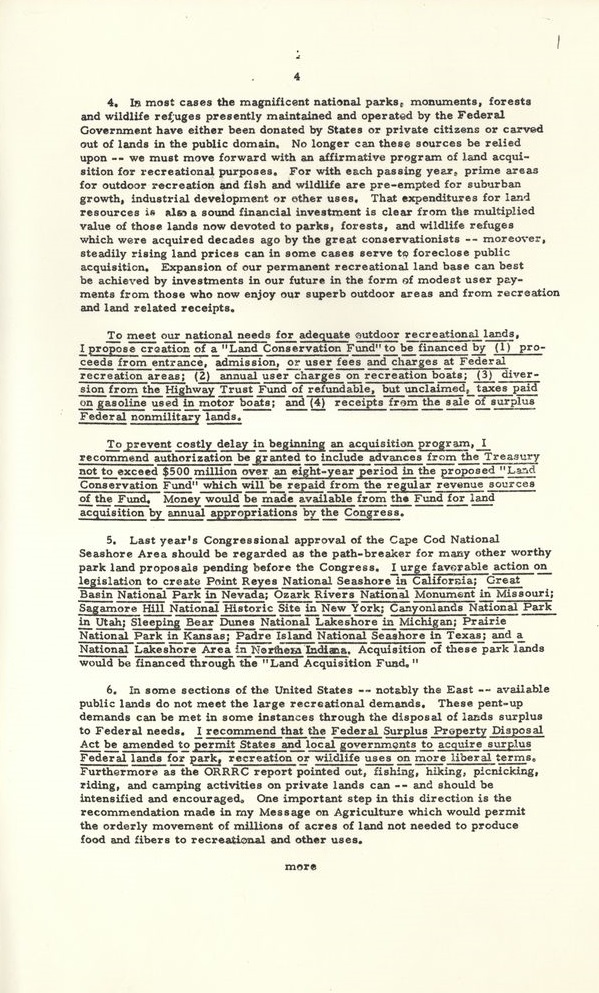
President Kennedy’s efforts to bring awareness and action to the issue of conservation culminated in the Conservation Tour, a 5-day 10-state trip in September 1963, which included a stop for the Whiskeytown Dam Dedication in Whiskeytown, CA. President Kennedy remarked that with the new dam, the people can…
…enjoy new opportunities for constructive recreational use, and new access to open space as a sanctuary from urban pressures. And, of great importance, the flow… can now be regulated for the benefit of the farms and cities in the lower valley.
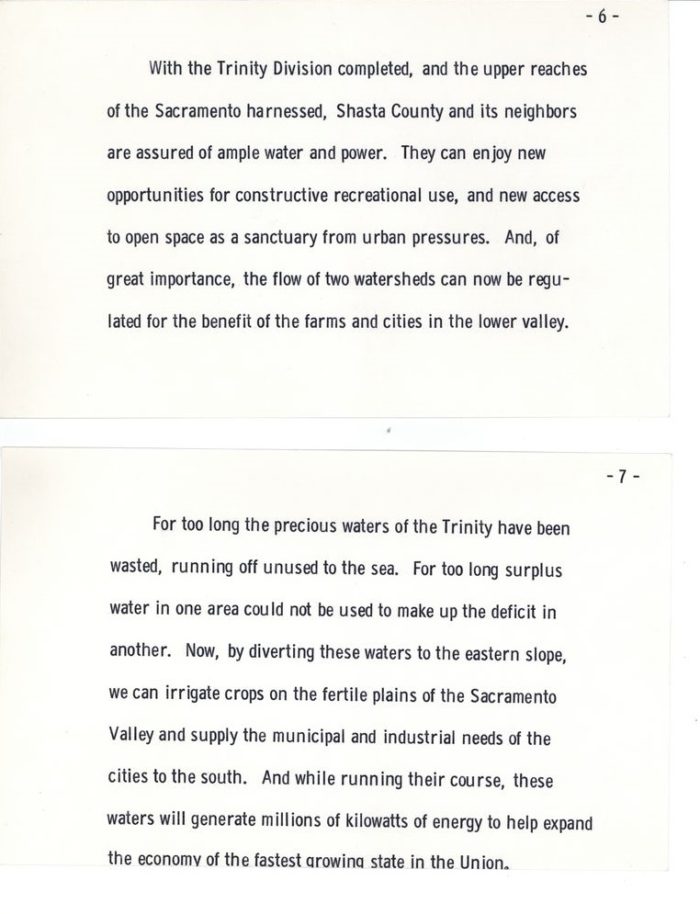
Not quite a National Park area in 1963, Whiskeytown Dam became part of Whiskeytown National Recreation Area in 1965.
John F. Kennedy was an active advocate for the conservation of public land and resources before and during his presidency. In his remarks at the White House Conference on Conservation on May 25, 1962, he stated:
I don’t think there is anything that could occupy our attention with more distinction than trying to preserve for those who come after us this beautiful country we have inherited.
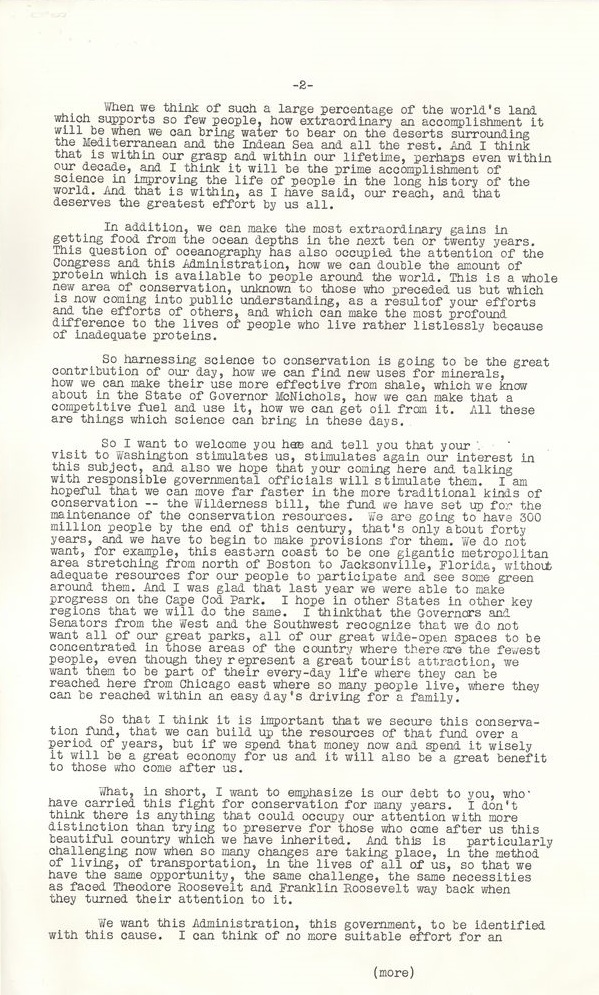
President Kennedy’s voice was silenced within two months of the Conservation Tour, but his words still echo the goals and ideals of the National Park Service and all those who have advocated for the conservation of public land for the greater good.
